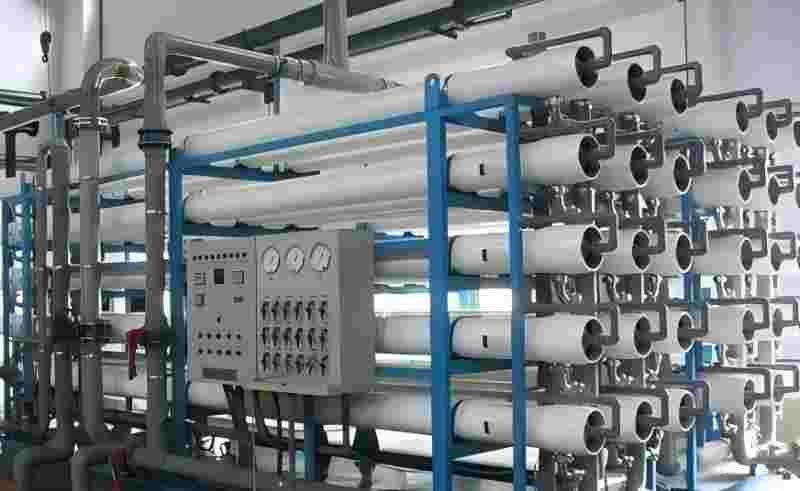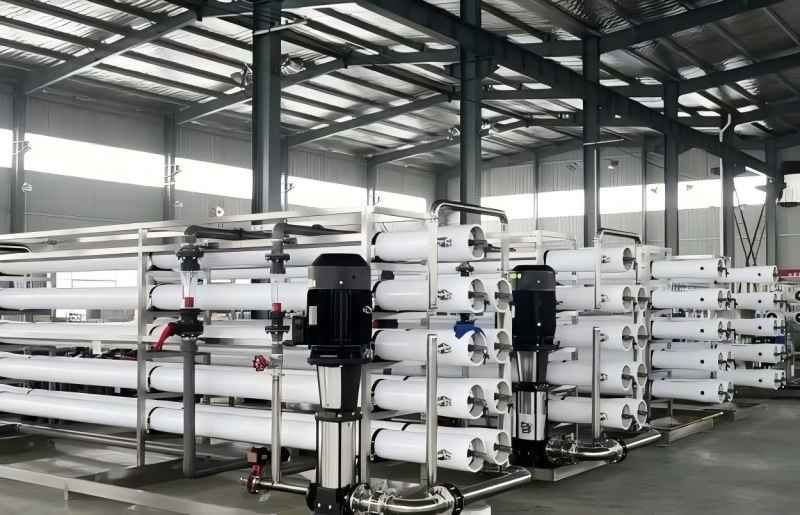Marketing Hotline:
(+86)0532-88988868
(+86)0532-88988868
Reverse osmosis membrane is a common and important equipment part in water treatment equipment, which can effectively filter out pollutants in the water, so that the effluent can achieve the purpose of pure water.
Generally, the service life of reverse osmosis membrane element is 3-5 years, after this service life should be replaced and treated, of course, the service life of the membrane element is not fixed, if the membrane element adopts a certain protection method and pays attention to some use matters, the service life of the membrane element can be extended.
How to prevent damage to the performance of reverse osmosis membranes

New reverse osmosis membrane elements are typically soaked with 1% NaHSO3 and 18% glycerol in aqueous solution and stored in a sealed plastic bag. If the plastic bag is stored for about 1 year without breaking, it will not affect its life and performance.
When the plastic bag is opened, it should be used as soon as possible to avoid the adverse effects on the components due to the oxidation of NaHSO3 in the air.
After the trial operation of the reverse osmosis equipment, the following two methods can be used to protect the membrane. The equipment is in trial operation for two days (15~24h), and 2% formaldehyde solution can be used for maintenance; After running for 2~6h, it can be maintained with 1% NaHSO3 aqueous solution (the air in the equipment pipeline should be exhausted to ensure that the equipment does not leak, and all inlet and outlet valves should be closed).
Both methods can achieve satisfactory results, the first method is slightly more expensive and is used when the idle time is long, and the second method is used when the idle time is short.
How to extend the service life of reverse osmosis membranes

Reverse osmosis equipment may be damaged due to improper operation of the equipment, untimely cleaning or incorrect cleaning during operation, the following will analyze the causes of the above two situations and solutions, so as to extend the service life of the reverse osmosis membrane.
1. Damage to membrane performance caused by improper operation
01 The residual gas is operated under high pressure, forming an air hammer
There is residual gas in the reverse osmosis plant that operates at high pressure, and the formation of a gas hammer can damage the membrane. There are two common scenarios:
A. After the equipment is emptied, when it is re-run, the gas is not exhausted and the pressure is quickly raised. The remaining air should be exhausted under the pressure of 2~4bar, and then gradually increase the pressure.
B. When the joint between the pretreatment equipment and the high-pressure pump is not well sealed or leaks (especially the leakage of the microfilter and the pipeline behind it), when the pretreatment water supply is insufficient, such as the blockage of the microfiltration, part of the air will be sucked in due to the vacuum in the place with poor sealing, and the microfilter should be cleaned or replaced to ensure that the pipeline does not leak.
In short, the pressure should be gradually increased when there are no bubbles in the flowmeter, and the bubbles found in the operation should be gradually depressurized to check the cause.
02 The method of shutting down is incorrect
A. When the machine is shut down, the pressure is quickly lowered and not thoroughly flushed. Because the concentration of inorganic salts on the concentrated side of the membrane is higher than that of the raw water, it is easy to scale and pollute the membrane.
B. Rinse with pretreated water with chemical reagents. Membrane contamination can occur during equipment outages due to chemically laden water.
When the reverse osmosis equipment is ready to shut down, the chemical reagent should be stopped, and the pressure should be gradually reduced to about 3bar and rinsed with pretreated water for 10min until the TDS of the concentrated water is very close to the TDS of the raw water.
03Contamination of microorganisms due to poor disinfection and maintenance
Poor disinfection and maintenance of reverse osmosis equipment leads to microbial contamination. This is a common problem in the use of composite polyamide membranes, because the polyamide membrane has poor residual chlorine resistance, chlorine and other disinfectants are not correctly added in use, and users do not pay enough attention to the prevention of microorganisms, which can easily lead to microbial pollution.
At present, the pure water microorganisms produced by many manufacturers exceed the standard, which is caused by poor disinfection and maintenance.
The main manifestations are: the RO equipment is not maintained with disinfectant when leaving the factory; The entire pipeline and pretreatment equipment were not disinfected after the equipment was installed; Intermittent operation without disinfection and maintenance measures; Failure to regularly disinfect pretreatment equipment and reverse osmosis equipment; The maintenance fluid is not effective or the concentration is insufficient.


